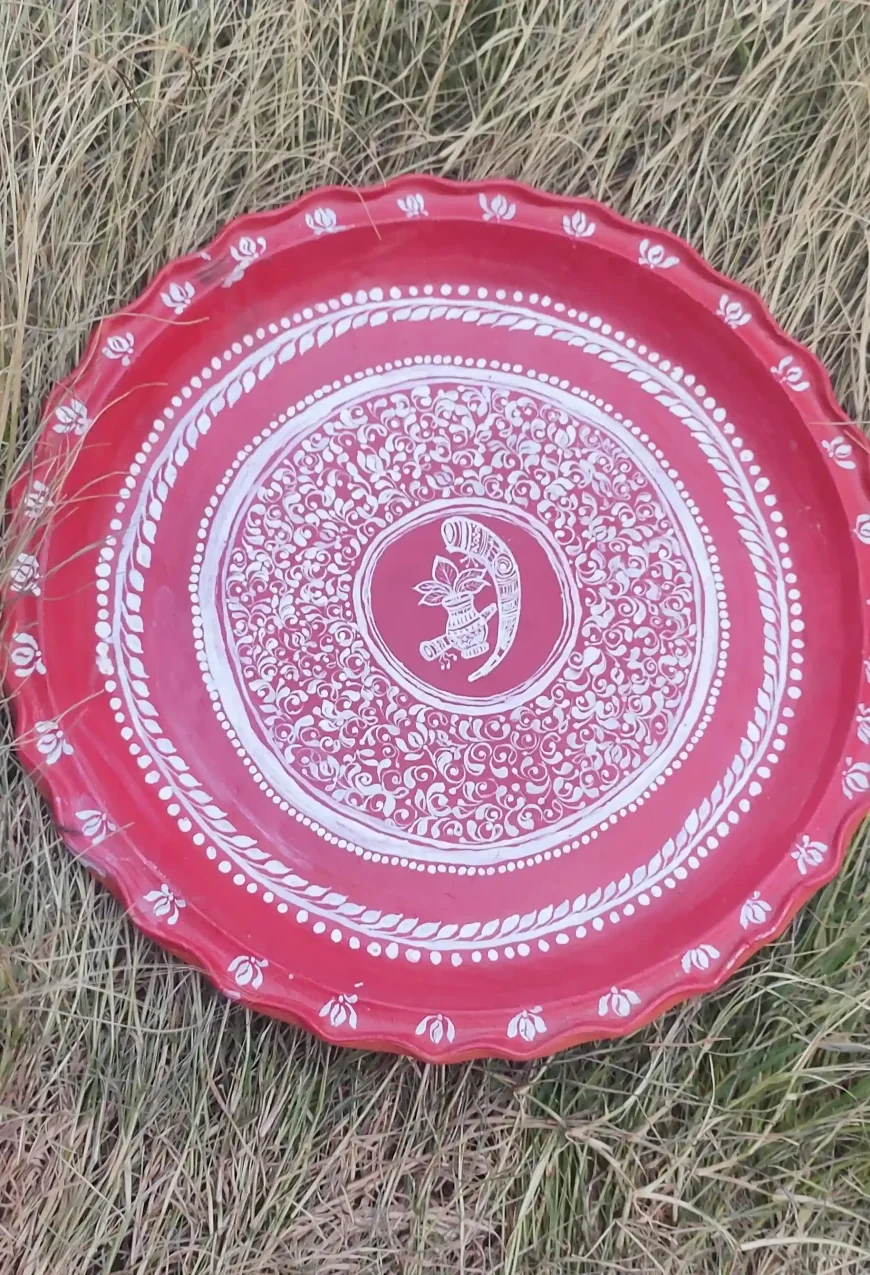Matir Thala & Kolka Design Tradition Painted in Clay
Discover the cultural beauty of Matir Thala with Kolka design—hand-painted earthen plates that blend tradition, art, and ritual. A timeless expression of heritage

In the heart of Bengal and other parts of Eastern India, traditions aren't just passed down—they are painted, preserved, and performed. One of the most iconic visuals of this culture is the Matir Thala (clay plate) adorned with Kolka design, a hand-drawn paisley and floral motif often used in religious and festive rituals.
The image above reflects this spirit—an earthen plate dyed in red ochre and detailed with white kolka art, bringing heritage alive with every stroke.
What is a Matir Thala?
A Matir Thala is a traditional earthen plate, typically circular and sun-dried or kiln-baked, used for ritualistic offerings, puja thali decor, and festive symbolism. Often coated in natural red, it becomes the canvas for white kolka patterns—delicate, curving lines of paisleys, lotuses, and dots.
These designs are drawn using rice paste, chalk, or natural white mud, showcasing intricate handwork passed down through generations.
The Meaning Behind the Kolka Design
The Kolka, also known as Kalka or Kalka motif, is more than just an art style. It represents auspiciousness, fertility, and prosperity. In the center of the plate in your image, the conch and kalash symbol mark it as a powerful object of spiritual focus, especially during ceremonies like:
-
Lakshmi Puja
-
Durga Ashtami
-
Griha Pravesh (housewarming)
-
Nabapatrika snan
-
Traditional Bengali weddings
How It's Made
-
Clay Plate Preparation: Local potters mold and shape the clay into a large thala, sun-dry or fire it in kilns.
-
Color Coating: Red oxide or sindoor-like paste is applied to create the signature red background.
-
Designing with Kolka: Artists use thin brushes, twigs, or even fingers to draw the white kolka art—often with chalk dust mixed in water or rice paste.
-
Drying and Usage: Once dried, these plates are used in temples, home altars, or cultural festivities.
Kolka-Inspired Nail Art or Home Decor?
Yes! In today’s time, Kolka isn’t just confined to thalas. Its motifs are being reinvented in:
-
Nail art, where paisleys and mandalas shine on fingertips using nail brushes, gel polishes, and glitters
-
Wall decor, rangoli, pottery, and ethnic fashion prints
Traditional doesn’t mean outdated—it means timeless.
More Products:
Lamps, Buffers, Powders, Monomers, Glue, Top Coats






